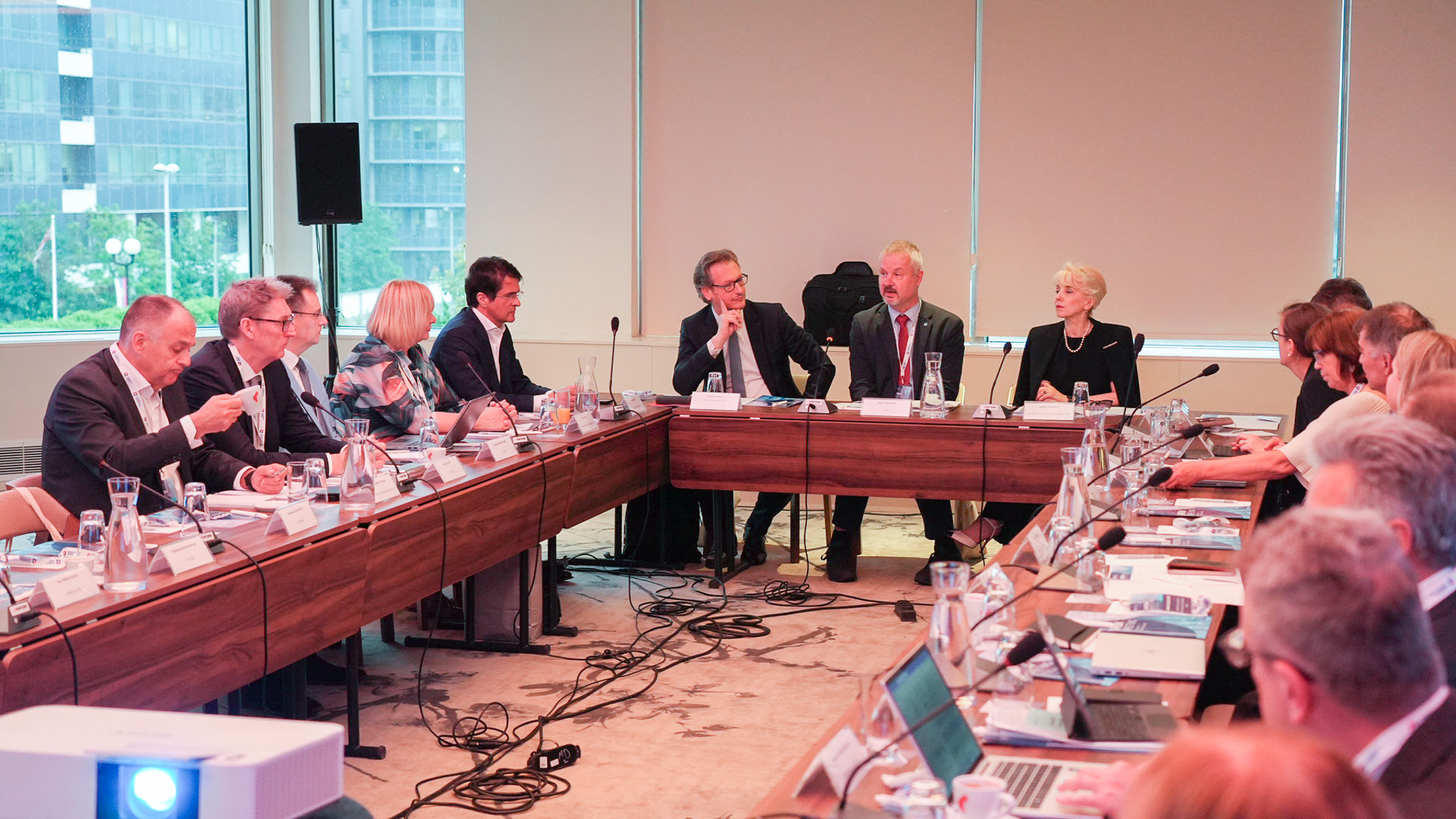CCIS Hosts CEFIC Summit: Cooperation and Innovation as a Response to Challenges in the Global Chemical Industry
May 6, 2025
Cooperation and innovation are key to overcoming common challenges in the chemical industry, from the energy crisis to global competition—this was emphasized at the annual summit of the European Chemical Industry Council (CEFIC), held for the first time in Belgrade and organized by the Chamber of Commerce and Industry of Serbia (CCIS).
“The goal of Serbia is to align its legislation with European standards and thus integrate more strongly with the EU market, even before full membership. The chemical industry, with more than 6,000 companies and strong export potential, plays a key role in this process,” said Mihailo Vesović, Vice President of the Chamber of Commerce and Industry of Serbia. He added that membership in associations such as CEFIC enables Serbian companies to respond in a timely manner to regulatory and market changes.
Minister of Domestic and Foreign Trade, Jagoda Lazarević, emphasized that Serbia remains firmly committed to European integration and that the Serbian economy is strongly linked to the EU, both through trade and foreign investment. According to her, the Serbian and European chemical industries face the same challenges, as well as the growing market share of China and the U.S. in this sector. “We believe that through joint efforts we can develop an innovative and sustainable model to overcome these challenges,” said Lazarević, adding that the advantage of Serbian companies lies in their resilience and ability to adapt.
“The annual summit of the European Chemical Industry Council (CEFIC) is being held outside the EU for the first time—right here in Belgrade. This is a great recognition for the domestic chemical industry and confirmation of our place in European developments,” said Dragan Stevanović, Secretary of the Association for the Chemical, Rubber and Non-Metal Industry at CCIS. He added that the Chamber of Commerce and Industry of Serbia has been a member of CEFIC for six years—a body that represents the interests of the chemical sector in EU institutions and brings together national associations from across Europe, as well as from the United Kingdom, Switzerland, and Norway.
While the EU chemical industry is facing energy challenges and capacity closures, the sector in Serbia is experiencing growth. Last year, there was a 16.4% increase in rubber and plastics processing and a 6.8% rise in chemical production.
“We see great opportunities for our companies to supply the European market, as our chemical industry is export-oriented. The chemical industry accounts for 13.9% of Serbia’s total exports, with an export value of around 4 billion euros. Nearly 65% of that goes to the EU market, 26% to countries in the region, the United Kingdom, and Norway, while 9% is exported to other global markets. This shows that we are competitive, meet the strictest EU criteria and standards, and have the potential to further strengthen our presence in the European market,” Stevanović noted.
The two-day conference will focus on current topics and challenges facing the chemical industry in Serbia, Europe, and globally, development potentials, and alignment with EU legislation. Special attention will be given to chemical management in the context of Serbia’s EU accession, the fertilizer market, and the impact of CBAM regulations on Serbian exports.
LATEST NEWS
